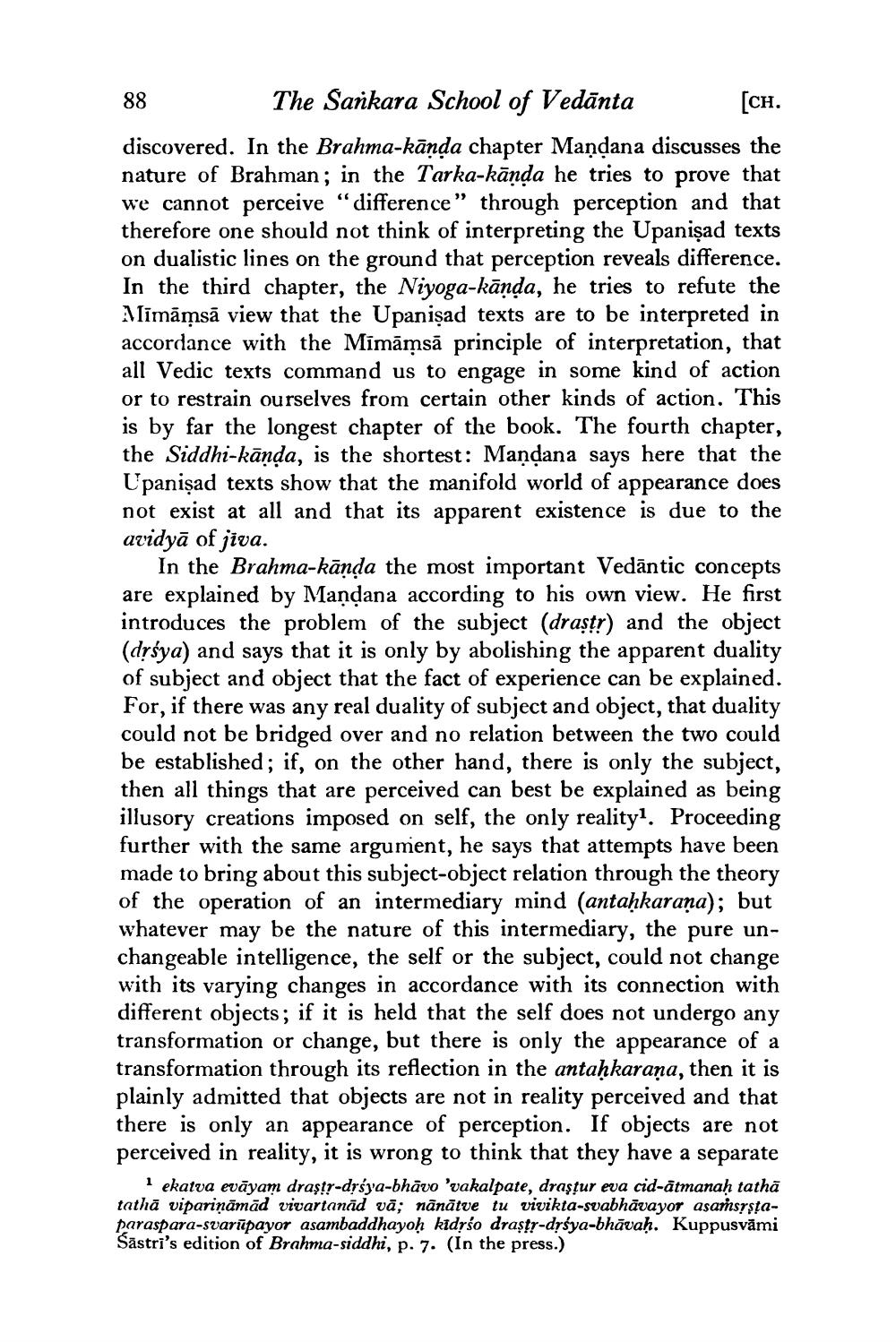________________
The Sankara School of Vedanta
[CH.
discovered. In the Brahma-kanda chapter Mandana discusses the nature of Brahman; in the Tarka-kāṇḍa he tries to prove that we cannot perceive "difference" through perception and that therefore one should not think of interpreting the Upanisad texts on dualistic lines on the ground that perception reveals difference. In the third chapter, the Niyoga-kāṇḍa, he tries to refute the Mīmāmsā view that the Upanisad texts are to be interpreted in accordance with the Mīmāmsā principle of interpretation, that all Vedic texts command us to engage in some kind of action or to restrain ourselves from certain other kinds of action. This is by far the longest chapter of the book. The fourth chapter, the Siddhi-kāṇḍa, is the shortest: Mandana says here that the Upanisad texts show that the manifold world of appearance does not exist at all and that its apparent existence is due to the avidyā of jiva.
In the Brahma-kāṇḍa the most important Vedantic concepts are explained by Mandana according to his own view. He first introduces the problem of the subject (draṣṭr) and the object (drsya) and says that it is only by abolishing the apparent duality of subject and object that the fact of experience can be explained. For, if there was any real duality of subject and object, that duality could not be bridged over and no relation between the two could be established; if, on the other hand, there is only the subject, then all things that are perceived can best be explained as being illusory creations imposed on self, the only reality1. Proceeding further with the same argument, he says that attempts have been made to bring about this subject-object relation through the theory of the operation of an intermediary mind (antaḥkaraṇa); but whatever may be the nature of this intermediary, the pure unchangeable intelligence, the self or the subject, could not change with its varying changes in accordance with its connection with different objects; if it is held that the self does not undergo any transformation or change, but there is only the appearance of a transformation through its reflection in the antaḥkaraṇa, then it is plainly admitted that objects are not in reality perceived and that there is only an appearance of perception. If objects are not perceived in reality, it is wrong to think that they have a separate
88
1 ekatva evāyam draştr-drsya-bhāvo 'vakalpate, draşṭur eva cid-ātmanaḥ tathā tathā vipariņāmād vivartanād vā; nānātve tu vivikta-svabhavayor asaṁsṛṣṭaparaspara-svarupayor asambaddhayoḥ kidrso draṣṭr-dṛśya-bhavaḥ. Kuppusvāmi Sastri's edition of Brahma-siddhi, p. 7. (In the press.)




